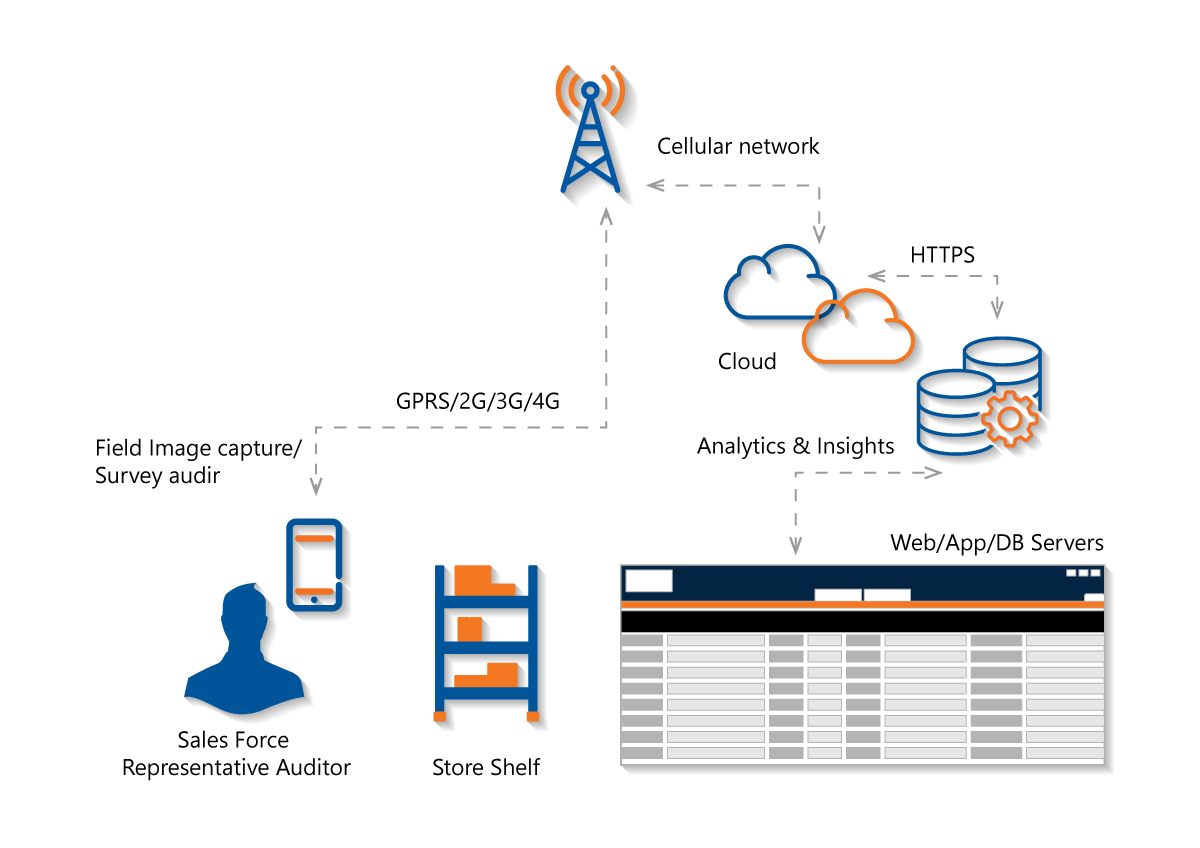Home > Blogs > Machine Learning In Visual Search For Emerging Markets
Machine Learning In Visual Search For Emerging Markets

The unorganized retail sector is a massive space for technological advancement for optimizing various business processes. The diversity of complexities offer several opportunities for sanitization of prevalent practices. One such area is planogram compliance. Top Industry analysts estimate that internal process failures cause up to 50% of inventory distortion, and prevention of such inefficiencies can result in around 7-8% increase in sales.
While modern trade is picking up in markets such as India and China with supermarkets sprouting in big and medium-sized cities, a substantial section of the demand chain still remains “distributed” in nature. CPG manufacturers still rely heavily on distributors to cover the last mile with numerous small-sized retail outlets, such as mom-and-pop stores.
It is a known fact that CPG brands even after implementing multiple monitoring controls, do not have sufficient control over retail execution at mom and pop stores. With India itself having over 7 million known ‘kirana’ stores, it gets tedious to apply controls at scale. Particularly for food products that need special storage conditions, this becomes an overwhelming challenge for brands. CPG companies often provide such outlets with branded refrigerators for maintaining soft drinks at the appropriate temperature, or with smaller coolers for items such as chocolates. However, several challenges exist with respect to the retailer’s actual compliance with the steps necessary to keep such products in a desirable ambience. Such challenges include but are not limited to the following –
Each of these situations result in non-compliance to Planograms, often referred to as “Brand Contamination”. All of these challenges can be tackled in a different manner. For instance, smart coolers empowered with Wi-Fi or other IoT technologies such as temperature sensors and accelerometers can track whether the cooler is being maintained at the right temperature, or whether it has been moved from its designated location in the store.
CPG companies often hire third-party data-syndication providers for conducting in-store audits, which involves an auditor visiting a certain number of stores in an area to visually verify whether the outlet is adhering to the planogram. However, there are inherent shortcomings to this approach –
Therefore, a more suitable solution in emerging markets is to utilize the distributor sales force for conducting such audits. Sales representatives frequently visit retail outlets for taking orders, delivering shipments, collecting payments – on an average, one store visit per week. Their in-store responsibilities can be extended to conduct retail execution related surveys. But a factor causing minor deterrence in this approach is that sales representatives may not be fully relied upon due to their lack of ability in conducting such audits at the same level of competitiveness as a professional auditor.
This leads to a technology-based solution enabling a sales representative to carry out such audits effectively and accurately – Visual Search (Image processing). The sales representative can carry a smart phone issued to him by the distributor, and simply click a picture of the shelf or the refrigerator containing products of the brand that he is auditing for. This image can then be sent to the brand in two ways –
Certain food products such as soft drinks may be very difficult to visually differentiate, e.g., Cola-flavored soft drinks will have similar color, and can’t be determined especially if the bottles are placed in a way that their logos are not visible. In such circumstances, standard image-processing algorithms such as SIFT or SURF may not work reliably, since they rely on techniques such as feature-point detection.
Alternately, Machine Learning based algorithms can work more effectively in correct identification of a brand’s product versus a competitor’s product in such scenarios, to give precise information on brand contamination. Deep-learning techniques have been found to be more accurate than traditional algorithms (which have ~20% error-rate), thereby also reducing the cost of conducting manual audits.
The analytics generated via such automated visual search can produce powerful insights on promotion effectiveness and retail execution for brands. It brings a new dimension by adding qualitative parameters to existing sales data, for better insights. For instance, a newly launched promotion may not have been effective in certain regions due to unfavorable in-store ambience. This critical piece of information results in actionable decision-making, leading to higher on-shelf brand visibility. Eventually this leads to an uplift in sales for a brand.
EdgeVerve offers these capabilities to retail businesses via its Artificial Intelligence platform XtractEdge, which when bundled with its sales-execution product TradeEdge can provide powerful insights through machine-learning. In today’s competitive landscape, it is becoming increasingly difficult to drive operational efficiency at reduced costs. The businesses which employ the right technology at the right time can be ready for a successful future. So are you prepared?



Mayank Shridhar
Associate Director – Product Engineering, TradeEdge, EdgeVerve
He has 15 years of software, product development and consulting experience across Retail, CPG, logistics, pharmaceuticals and aerospace industries. He was a founder member of the Infosys RFID & Pervasive Solutions practice. He was also the chief architect for the ShoppingTrip360 platform. He has won several accolades from the industry such as being selected as one of the Top 10 Java Professionals at Bangalore by Silicon India. He holds a patent filing, as well as several white-paper/ view-point publications on leading websites such as RFIDJournal.com.
More blogs from Mayank Shridhar >